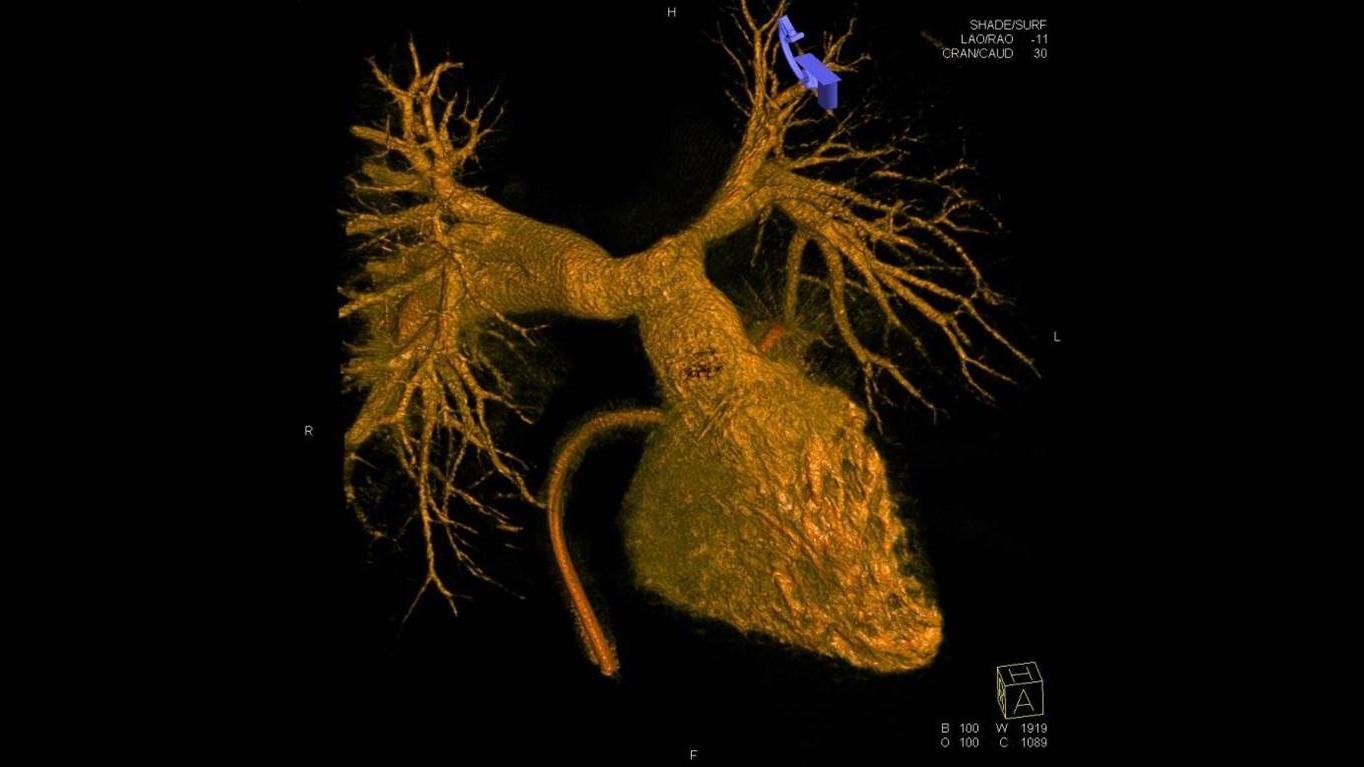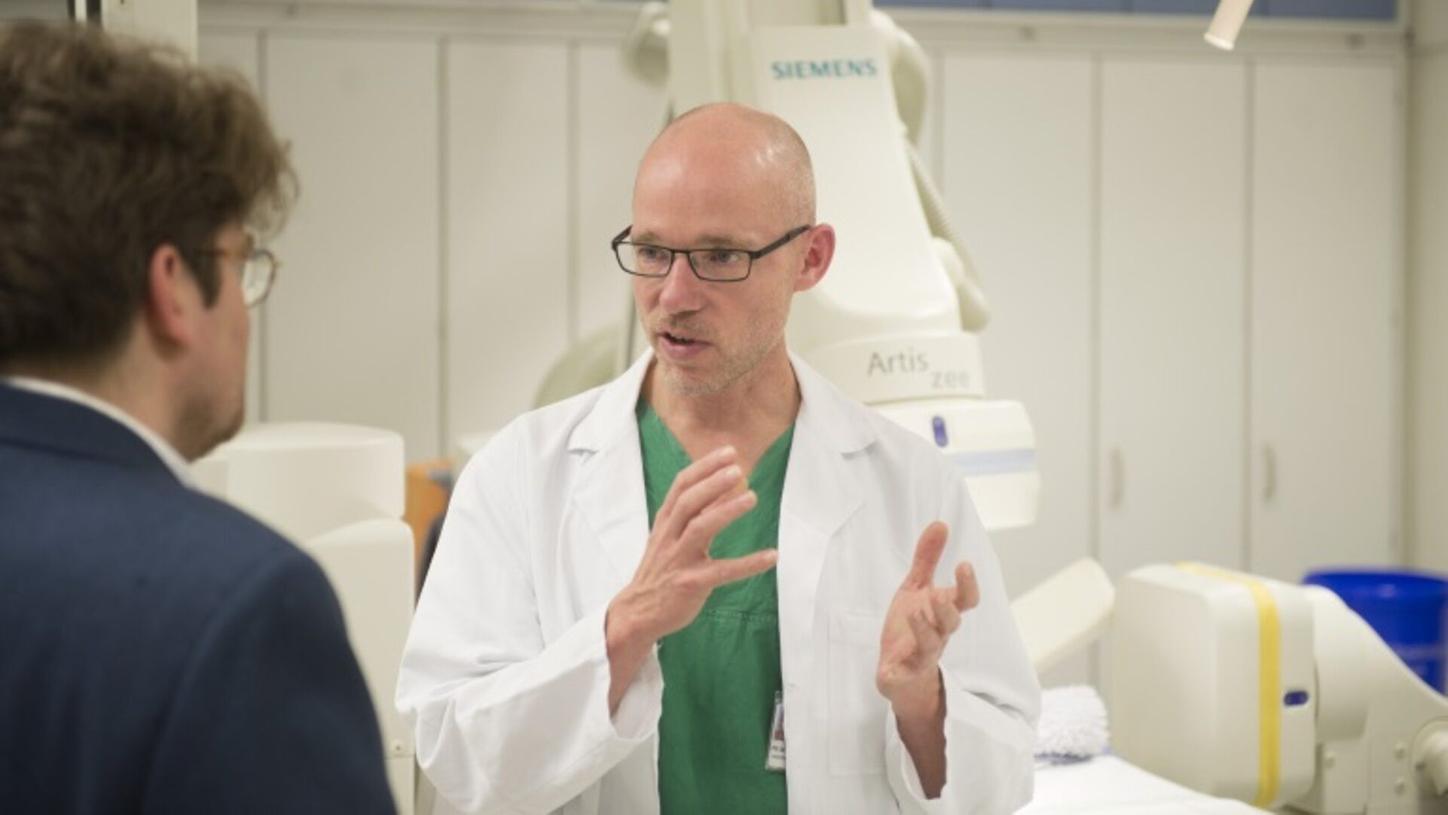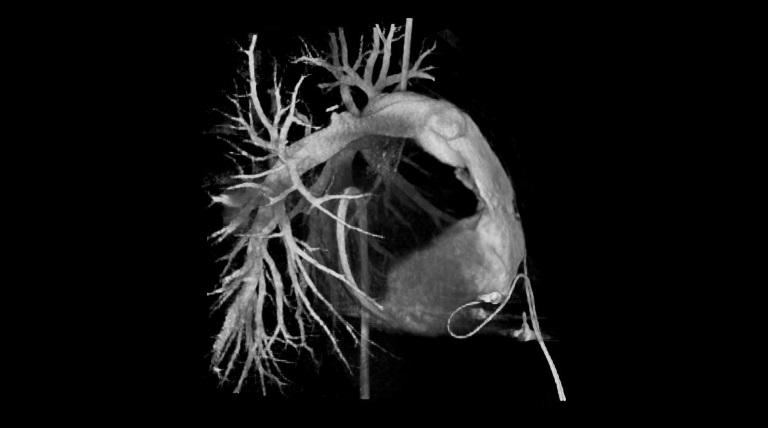Solutions to support you in your routine and advanced procedures for congenital heart disease. Although congenital heart disease is often considered a childhood condition, advances in interventional and surgical treatment have also led to significantly reduced mortality rates and patients now often live well into adulthood. Find out how smart solutions from Siemens Healthineers can support you in your routine and advanced procedures for congenital heart disease.
Learn more about our Advanced Applications below:

Low-dose syngo DynaCT and syngo DynaCT Cardiac
A new perspective in CHD – 3D imaging using rotational angiography
Siemens Healthineers is revolutionizing the workflow for complex cardiac interventions by introducing syngo DynaCT Cardiac, which enables CT-like imaging of the heart during the procedure using angiography. syngo DynaCT Cardiac enhances your diagnostic and therapeutic capabilities by enabling you to visualize cardiac structures like the whole heart and different abnormalities, in the cath lab.

syngo Fusion Package
Multimodality fusion in the cath lab
Enables previous CT, MR or PET CT images to be fused with high-contrast angio 3D or syngo DynaCT datasets. syngo Fusion Package displays relevant diagnostic data at a glance, thereby significantly supporting interventional workflows, and overlays acquired data with live fluoroscopy images using syngo 3D Roadmap.
Clinical Content

A clear view inside tiny hearts
Martin Glöckler, MD, senior attending physician for pediatric cardiology at University Hospital Erlangen, talks about the advantages of 3D visualization in congenital heart disease interventions and for planning of pediatric heart surgery.

Touching young hearts
Professor Sir Magdi Yacoub dreams of fighting the number one killer in the developing world: cardiovascular disease. He founded a medical center in Egypt with the aim of providing high-quality healthcare to children in particular – free of charge. In 2016, a new outpatient department was opened enabling vast expansion from ca. 3,000 outpatients to almost 16,000 treated in one year. Minimally invasive cardiac interventions are also growing rapidly – up by over 25% from 1,600 in 2015 to 2,056 in 2016. Open heart surgery continues to be a major strength of the center with 828 interventions performed in 2016 – more than 20% of which were on babies in first month of life.

The challenge of imaging small bodies
What is the most effective way to support high-quality, efficient pediatric interventional cardiology? For Seattle Children’s Hospital and Thomas Jones, MD, at least part of that answer is high-quality imaging and continuous dose reduction.
